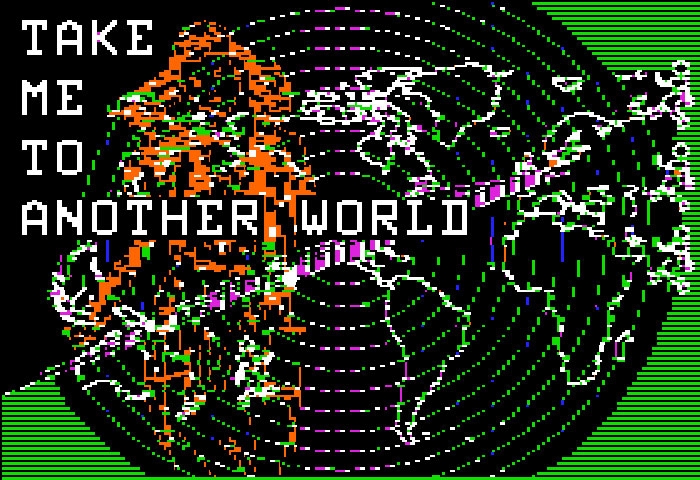Ruth Wolf-Rehfeldt, Charlotte Johannesson and Ester Fleckner outwardly have nothing to do with one another: they’re from different eras, making divergent work in unrelated media. Yet here they are, presented under the title Pressure/Imprint, at once distinct and entangled. A loose arrangement of temporary walls divides the wide-open space of Malmö Konsthall into chapters reserved for each artist, but chapters large enough to remain porous at their edges, each allowing sightlines to the other two. The exhibition architecture is a manifestation of the borders that also separate the three women in life, the artists being born respectively in 1932, 1943 and 1983 in the former East Germany, Sweden and Denmark. Johannesson, during the 70s, was one of the first artists in Scandinavia to work with nascent computer technology, while Fleckner aligns herself with a tradition of woodcuts dating back to the fourteenth century. Yes, difference abounds in this show. And yet it is transcended as easily as stepping over a doorsill.
As revealed here, one of many points of contact across their positions is the meeting between the manual and the technological. Or rather, the ways in which that’s a false binary, the two existing in constant oscillation. Working together with the computer engineer Sten Kallin, Johannesson and her husband, Sture, built their own software to translate images from textile to a digital format. Like computer graphics, a woven tapestry consists of ‘pixels’, is constructed numerically and is made on a screen (albeit a different kind). Featuring hard-and-fast eponymous messages like Drop Dead (1977) and I’m No Angel (1974), Johannesson’s large tapestries appear as iconic forerunners of an aesthetic and a type of communication that, a decade on from their making, would have migrated to the digital realm and become ubiquitous.
When Johannesson started working with the Apple II computer, subversion and experimentation were synonymous: there simply was not enough precedence for proper usage to have been established. In a similar way, Ruth Wolf-Rehfeldt pushed her medium, the typewriter, to its limits, but for different reasons. With restrictions on exhibition and movement for artists in the GDR, Wolf-Rehfeldt participated in the widespread artistic exchange across the Iron Curtain through mail. In what must have been an immensely laborious process, she made intricate patterns using only letters and spaces: one diamond shape reads Limits Endlessness (1975); another, undated, Aufbruchstimmung. The latter roughly translates to ‘a sense that something is going to change’, a sentiment actively at play in Wolf-Rehfeldt’s wildly experimental output long before it materialised politically in 1990. Following this turn of events, there was no strict reason to send art through the mail and, for this connoisseur of the genre, no reason to make art at all.
Wolf-Rehfeldt’s work allows us to see language as graphics, simply as different uses of straight and bent lines. When things are broken down, we begin to realise how they might be reassembled differently. How letter A’s might make the roof of a building, as in Concrete Architecture (1980), or how, in Ester Fleckner’s Clit-dick Register, 1–22 (2013–14), a clit and a dick both look like a U, and a U, too, proves manifold. In Fleckner’s woodcuts trial, and especially error, are key. Although reminiscent of blueprints or instruction manuals, the strange figures flaunt their irregularity as if adamantly resisting completion. Woodcutting was invented to reproduce, but Fleckner uses this method because it doesn’t, or not precisely anyway. As with Johannesson and Wolf-Rehfeldt, her subversive use of technology challenges normativity and attempts to form alternative connections between things. The series of woodcuts A closet does not connect under the bed, 1–20 (2016) shows disassembled closet parts, one with ironic instructions to ‘build and seduce’ pencilled in above. This would be a normative approach to exhibition-making. The one that spawned Pressure/Imprint, thankfully, is not.
Pressure/Imprint, Malmö Konsthall, 30 September – 28 January
From the January & February 2018 issue of ArtReview
